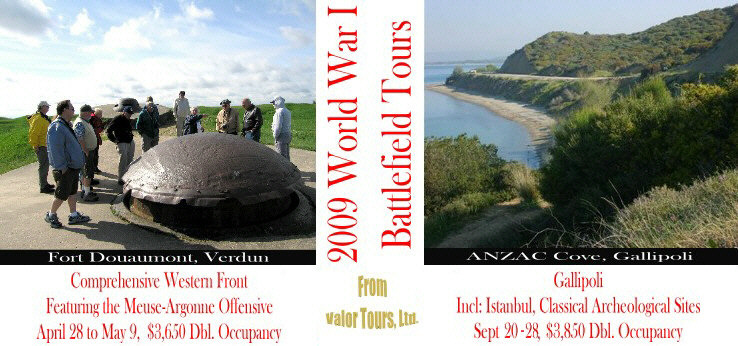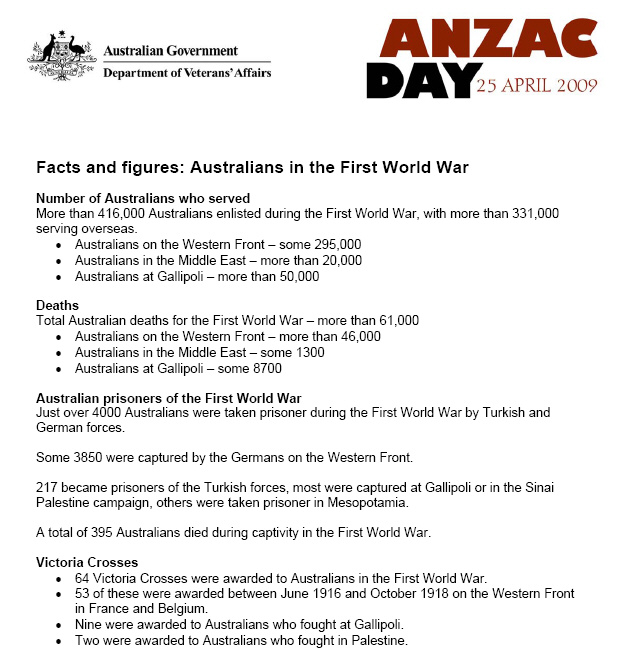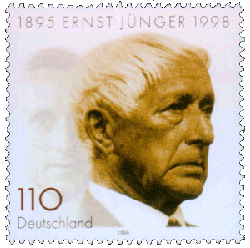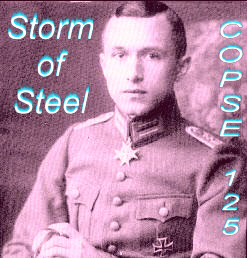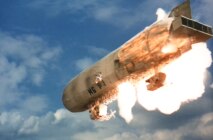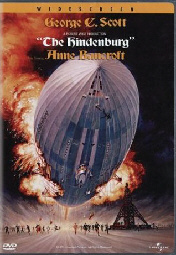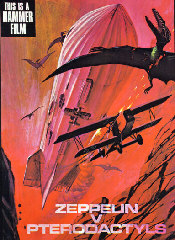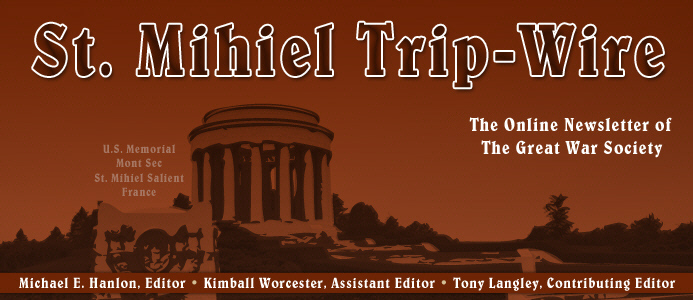

TRENCH REPORT: Your editor will be off to the Western Front leading a battlefield tour for the next few weeks. I'm posting the May issue a few days early since I'm departing on April 27th. This year's itinerary includes a stop-off near Poelcappelle to visit Trip-Wire reader Charlotte Descamps, proprietor of Varlet Farm, a working farm and B&B located at the October 1917 focal point of the Passchendaele battlefield. In next month's issue we will include photos of the incredible haul of weapons and munitions Charlotte and her husband have plowed up out of their fields. Also, remember we are still interested in hosting some WWI-oriented advertisements such as those you will see below. (information) MH
This Month's Internet Feature
Nurses at War
Nurse Helen Fairchild: My Aunt, My Hero by Trip-Wire Subscriber and Friend Nelle Rote
Florence Farmborough, British Nurse with the Tsar's Army
Vera Brittain's Pilgrimage
Australian Nurses on the Western Front
Nurse Edith Cavell: Fragile Martyr
Queen Alexandra's Imperial Military Nursing Service
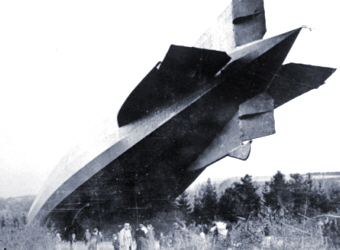
Wreckage of a Zeppelin in France, 1917 (Life Collection)

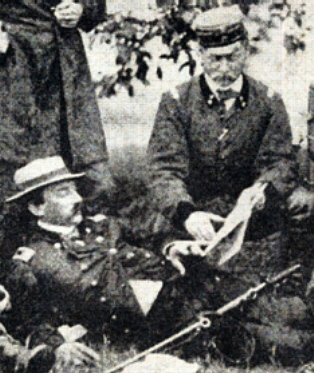
The gentleman on the right pointing out something to Civil War Union Army General Phil Sheridan was a world-famous figure in the Great War. Name him. (Answer below.)
|
Remember Them on Memorial Day
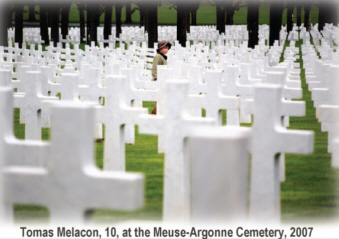
|
GREAT WAR 2009 EVENT CALENDAR
|
Western Front Association-U.S.A. &
The Great War Society
Combined 2009 Annual Seminar,
September 11 - 13, 2009
National World War I Museum
Kansas City, Missouri
The wide-ranging and compelling theme for the seminar combines the original seminar ideas for both organizations: "Technology, Treaties and the War: From 'Tin Hats' to Tanks and 'Top Hats' to Territories." Registration forms, fees and further information will be forthcoming. Check back here or at the organizations' Websites for details. (link)
|
Western Front Association
U.S. Branch Chapter Meetings
Check for Your Region
Regularly Updated (details)
|
Great War Society Monthly Chapter Meetings
Berkeley, San Francisco and Palo Alto, CA
Regularly Updated (details)
|
Upcoming Events at the National World War I Museum
Kansas City, Missouri
Regularly Updated (details)
|
Send additions/corrections:
Email Response
|
 Memorable Event
Memorable Event
|
Presentation of the Versailles Treaty to the Germans
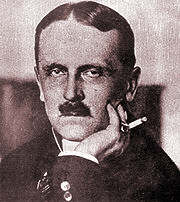
Count Ulrich von Brockdorff-Rantzau, Leader of the German Delegation
May 7, 1919
Vigorous Protests Follow
Click on Image to Read About the
Versailles Peace Treaty
|
|
News from Munich: A new screen adaptation of the life of Empress Elisabeth of Austria, known as Sisi, is under way for ZDF, ORF and RAI, with a budget of about 11,000,000 euros.
Speaking Engagement Reminder: Author Ed Lengel, award-winning author of To Conquer Hell, will be speaking at the Washington Memorial Chapel, Valley Forge, PA, Sunday May 24th at 2 P.M. on "America's Citizen Soldiers." This yearly event, previously held by the Veterans of the 314th Infantry AEF, continues on with the Descendents and Friends 314th Infantry AEF. In cooperation with the Washington Memorial Chapel, the 314th has held a Memorial Service every year since 1922. (directions)
News from New Zealand: A stage drama, King and Country, debuts on April 25th and plays through May at the Howick Little Theatre in Auckland. It focuses on the Kiwi sacrifices in the Great War with dramatic and musical sketches.
|

What It Was About - An Alternate Theory:
Germany's supreme object in the Great War was to challenge the world supremacy of the British Empire, and to achieve that purpose by turning the flank of the great sea Empire by means of a continuous railway from the German Ocean to the Persian Gulf. . .the pivot is to be found in the Near Eastern policy of Germany, and in her determination to connect Berlin not only with Constantinople, but with Baghdad and Basra. The key to the whole position was therefore in the keeping of Belgrade. To wrest the key from Serbia and to secure her line of communications, on the one hand with Constantinople, on the other with Salonika, was for Germany not merely the pretext but the reason for the war.
Europe and Beyond...,1870-1920, by Sir J.A.R. Marriott, 1921
|
|
|
Page Two
|
|
|
 |
Great War Veteran Ned Hughes, 108, of Great Harwood, England, died on April 4th. Called up late in the war, he was trained as a driver. Upon demobilization, he put his training to work and worked as a bus driver. Later he spent time as a grocer and working for the Bristol Aeroplane Company, which later became British Aerospace. (link)
|
|

French Fashion Meets the AEF
|
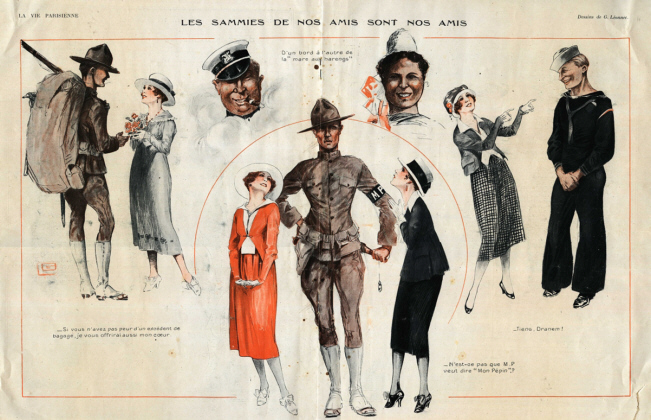
This Is Why Every American Lad Wants to Visit Paris
|
Click Here to Visit the Website of Our Contributing Editor Tony Langley
War in a Different Light
|
|
Subscribe to Our Online Magazine
|
|

|
|
|
Page Three
|
|
|
2009 World War I Tours Led by
Trip-Wire Editor Mike Hanlon
Click on image to request a brochure from greatwar@earthlink.net
|
|
|
 |
How To Get Wounded 14 Times, Win the Pour le Mérite, Survive to 102 and Become a
World-Famous Author
The Great War Service of Ernst Jünger
|
[Ed. If you are just getting introduced to Ernst Jünger, see our earlier overview of his career. (link)]
Prewar:
It was [a preoccupation with issues of escape and autonomy] which led Jünger to abscond from school on November 3, 1913,
head for Verdun and enlist in the French Foreign Legion. His plan was, apparently, to
reach North Africa with the Legion, desert and make his way to what he imagined would
be the primitive reaches of central Africa where he could lead some sort of grandiose life.
In reality, however, he was bitterly disappointed to find North Africa thoroughly under the
influence of its European colonists. Moreover, his attempts to [desert] from the Legion
were foiled by the military police, and his father eventually managed to secure his
discharge . . . as Jünger had actually been too young to sign the enlistment papers. . .
"Kriegsausbruch 1914", a short piece which Jünger first published in 1934, gives a highly subjective account of his
own experience of August 1914, colored, of course, by the experience of 20 intervening
years. Jünger describes how he and two workers were working on the roof of the family
house, with the magnificent Lower Saxon countryside spread out around them, when the
postman passed by and informed them that mobilisation had been ordered. In Jünger's
reconstruction of the passions of 1914, he decided almost immediately to volunteer. . .In this text, the outbreak of war, the presence of the Lower Saxon countryside symbolising Germany, and the overcoming of social divisions when all three
went on to celebrate in the local pub combine to produce an idealised memory of August 1914.
1914:
Jünger volunteers at the outbreak of the War. He takes a Notabitur [early examination to gain release for service] and
matriculates at Heidelberg University before undertaking basic training from October until December, when his recruit company joins the Füsilier-Regiment 73 at the Champagne front.
1915:
Jünger's unit remains in position around the area of Bazancourt. February
and March are spent on a training course in Recouvrence. In April the Regiment is
deployed to Lorraine and Jünger is wounded for the first time at Les Éparges. Jünger
recovers and spends the summer at an officers' training course at Döberitz, returning to the
Regiment as Fähnrich (Ensign). There then follows an extended period of
[positional war] round Douchy and Monchy in the Artois region. At the end of November
he is promoted to Lieutenant.
1916:
The Stellungskampf in Artois continues. In April Jünger attends another
training course, returning to the front in June, where the Regiment comes under increasing
pressure in the buildup to the Somme offensive. In heavy fighting around Guillemont he
is again wounded and evacuated, whilst his unit suffers almost total casualties. He returns
to the front in November and is assigned to Divisional Intelligence as a reconnaissance
officer and is wounded again near St. Pierre Vaast. He is awarded the Iron Cross 1st Class.
He returns to the Regiment and again becomes a reconnaissance officer.
1917:
Jünger spends January on a Company Commanders Course. From now on,
Jünger is frequently appointed Company Commander of various companies within the
Regiment. In March he commands a patrol covering the German retreat from the Somme.
At Fresnoy he commands an observation post. In May the Regiment takes up positions on
the Siegfried Line. In June a forward standing patrol commanded by Jünger has a violent
encounter with British/Indian fighting patrols. The Regiment then moves to Cambrai for
training. Jünger is involved in training a Sturmtrupp. In late July the Regiment moves to
Flanders and Jünger takes part in fighting round Langemarck, playing an important role in
the defence of the Steenbach. In September he leads a fighting patrol against the French
trenches at Regniéville, which ends disastrously. October sees him in Flanders again in the
area around Passchendaele, once more as a reconnaissance officer. In late November the
Regiment is involved in the successful counterattack against the British tank offensive at
Cambrai. This involves intensive trench fighting in the course of which Jünger is wounded
and subsequently awarded the Ritterkreuz des Hausordens von Hohenzollern.
1918:
January, February and March are spent in preparation for Ludendorff's
Michael offensive. Jünger's company takes a direct hit from a shell in the last stages of the
move forward. Jünger takes part in an attack on a Scottish position by Écoust and is hit
twice. He rejoins the Regiment in June in an exposed position around Puisieux-le-Mont,
fighting British advances against the odds. In August, the Regiment undertakes a desperate
counteroffensive near Cambrai. Jünger is badly wounded, but continues fighting and,
despite being surrounded, manages to evade capture, a feat for which he was awarded the
Pour le Mérite. The remainder of the War is spent in a military hospital.
The above represents a summary of Jünger's war service based on In
Stahlgewittern, and is essentially an account of Jünger's service with the 73rd Füsilier
Regiment and maps neatly with independent accounts given in the two available
regimental histories. What is particularly striking is that he served exclusively on the
Western Front and that he saw action in the most intense battles of the War--on the
Somme, at Cambrai, at 3rd Ypres and the Michael offensive of March 1918. In other
words, he was involved in those battles which saw the highest casualties and the highest
concentrations of firepower and thus also inflicted the greatest sense of anti-modern
absurdity, chaos and ambivalence.
From: Writing and Rewriting the First
World War: Ernst Jünger and the
Crisis of the conservative
Imagination, 1914-25, Thesis Submitted for the Degree of Doctor of
Philosophy. John King, St. John's College, Trinity University, 1999
Dr. King is the Editor of the outstanding Ernst Jünger in Cyberspace Website.
|
|
Uniform Series
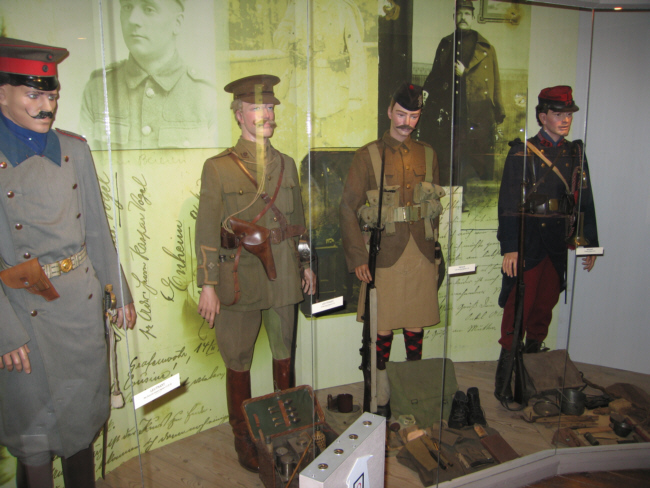
Early War Uniforms Displayed at the Memorial Museum Passchendaele 1917, Zonnebeke Chateau
(Earlier versions misidentified the museum as the Basilica Museum, Albert)
|
World War I Headlines
in the
21st Century
|
|
 |
Zeppelins in Film
One of Our Past Favorites from the Nickelodeon
Reviewed by Andrew Melomet (July 2007)
|
The widescreen cinema was made for Zeppelins. Images of the great silver skyships cruising majestically through azure skies and filling the screen are a lighter-than-air enthusiast's dream. The majority of the great Zeppelin movies are currently available on DVD. However, some of the titles suffer from not being mastered in anamorphic widescreen, and their visual quality is not what it could be.
In 1969 Paramount released The Assassination Bureau, directed by Basil Dearden and starring Oliver Reed, Diana Rigg, Telly Savalas and Curt Jurgens. Based on an unfinished novel by Jack London, The Assassination Bureau takes place in Edwardian England and Europe prior to the Great War. It deals with a secret organization of assassins for hire and concludes with a climactic duel aboard an Imperial German Navy Zeppelin. The juxtaposition of the quaint method of selected assassination practiced by the Bureau and the wholesale slaughter of the coming World War is discussed, and the film features not just an attractive cast but also beautiful sets and an Art Noveau production design. The DVD from Paramount is $14.99 and is 16:9 enhanced for widescreen televisions. While not a great movie, it is still very entertaining, and the authentic-looking external reconstruction of the early model Zeppelin is very interesting. I can't comment on the interior, but it does seem to have everything a Zeppelin needs.
1971 saw two airship movies released, Zeppelin and The Red Tent. Zeppelin was directed by Etienne Perier and stars Michael York, Elke Sommer, Peter Carsten, Marius Goring, Anton Diffring, Andrew Keir and Richard Hurndall as the legendary "Blinker" Hall, Director of Naval Intelligence and founder of the famous radio interception and decryption "Room 40". Michael York is Geoffrey von Richter-Douglas, half Scot and half German, who is recruited by British Intelligence in 1915 to defect to Germany where he is quickly brought into a nefarious scheme to raid a Scottish castle by airship and capture or destroy the Magna Carta. The German High Command feels this will break British war-time morale and help end the war. Elke Sommer is the best-looking aeronautical engineer the screen has ever seen. The plot is farfetched to say the least, but this is still a fun adventure film, and after watching it several times I'm convinced I know how to fly a Zeppelin. It features a superb recreation of a Zeppelin interior, and the exterior shots of the German airship sheds were actually filmed at the surviving British airship sheds constructed for the R100 and ill-fated R101. The scenes of the Scottish castle attack by German soldiers were filmed in Malta. The lovely cream-colored Malta is a giveaway for anyone who's been there. Unfortunately, Zeppelin was released on DVD in only in Australia and is currently out of print.
The Red Tent was an Italian-Russian co-production on the expedition of the N4 semi-rigid airship Italia to the North Pole. Peter Finch is Umberto Nobile, the famous Italian aeronautical engineer and arctic explorer. Sean Connery is the Norwegian explorer Roald Amundsen. Nobile's expedition ended in disaster and The Red Tent covers not only the details of the tragic expedition (Roald Amundsen lost his life in the search effort) but also the decades of guilt felt by Nobile by being rescued and evacuated before more seriously injured crew members. The Red Tent is $14.99 from Paramount and is enhanced for 16:9 televisions.
The Hindenburg was released in 1975. Directed by Robert Wise, it features a cast headed by George C. Scott, Anne Bancroft, William Atherton and Roy Thinnes. Albert Whitlock, the noted matte artist gets credit for the special visual effects of bringing the Hindenburg to life on the screen. This film effectively captures the visual grandeur of the great airship from a searchlight-lit nighttime launch to its inevitable end. There are beautiful scenes of the Hindenburg flying over icebergs and the 1937 skyline of lower Manhattan. Inside the airship, the surround sound kicks in with all the structural groaning of girders and mechanical sounds of the flight. Contemporary-critics faulted Robert Wise's low key approach to the drama aboard the airship as Scott's character looks for a saboteur and time bomb, but in retrospect his subdued depiction of the disaster is far more appealing than the anything-goes style of Pearl Harbor. It's a pity this title is not available in an anamorphic edition and has not been restored and remastered. The DVD is $14.99 from Universal.
In 1989 Indiana Jones and the Last Crusade, directed by Steven Spielberg and starring Harrison Ford and Sean Connery featured a daring escape from the fictitious LZ-138 by the Joneses. They make their way into a plane carried by the Zeppelin (similar to those carried by the USS Akron and USS Macon, the U.S. Navy airships) and drop away to eventually land. Actually, the German airship service never used parasite aircraft or developed the flying aircraft-carrier concept. The scenes of the airship launch were filmed at Treasure Island in San Francisco Bay. The surviving Art Deco buildings from the 1939 Golden Gate International Exposition became the structures at the German airfield. Astute Indiana Jones fans also know that the Short Solent Flying Boat used in Raiders of the Lost Ark is also in the Bay Area. It's part of the collection of the Oakland Aviation Museum (formerly the Western Aerospace Museum). Indiana Jones and the Last Crusade is available separately or as part of The Adventures of Indiana Jones collection from Paramount. It's widescreen enhanced and packed with special features.
In 1991 Walt Disney Pictures released The Rocketeer, based on Dave Stevens's comic book character. Taking place in a recreated 1938 Los Angeles, it includes a fiery climactic battle aboard a Nazi Zeppelin over the Hollywood Hills. Unfortunately, the $14.99 DVD is non-anamorphic and does little justice to the lovingly detailed production design, special effects and beautiful period airplanes. Fans of the Rocket Man Republic Pictures serials will immediately recognize the homage to the original character.
2004's Sky Captain and the World of Tomorrow was written and directed by Kerry Conran. Set in an alternative 1939 when the civilized world is under attack from giant flying robots, it was one of the first movies to be shot with the cast on a virtual back lot in front of a green screen. Sky Captain opens with a highly atmospheric docking of the fictitious Zeppelin Hindenburg III at the mooring mast on the Empire State Building during a snowstorm. Of course, although a mooring mast was part of the Empire State Building's design, no passenger airship ever docked there. This Paramount title is only $9.98 on DVD or $29.99 on HD DVD or Blu-Ray DVD.
Zeppelin! was a 2005 German release directed by Gordian Maugg. The story follows the grandson of a Hindenburg airship crewman investigating his grandfather's life and 1937 death at Lakehurst. Unfortunately, this title is not available on DVD in the United States or Europe.
The most recent movie to feature a Zeppelin is Flyboys, from 2006. Loosely based on the Lafayette Escadrille, Flyboys includes a major air battle during a daylight Zeppelin raid. The $29.99 DVD from MGM is well-produced and is also available as a $39.99 Blu-Ray DVD. My October 2006 review of the theatrical release of Flyboys can be accessed from the archives.
Perhaps the most interesting of all the widescreen Zeppelin movies is one that never made it out of pre-production. Hammer Films' Zeppelin v. Pterodactyls would have told the story of Allied prisoners escaping from a German POW camp in a stolen Zeppelin. Eventually the airship drifts into a lost world where it is attacked by a pterodactyl. After crash landing the crew encounters prehistoric creatures and humans. Only the evocative poster survives from this mind-boggling concept.
Here in the San Francisco Bay Area, Airship Ventures is entering its second season of providing scenic flights from historic Moffett Field, the original base of the Navy Airship USS Macon. Airship Ventures flies the Zeppelin NT, a semi-rigid design. The helium-filled hull is made of a multi-layer laminate and the interior structure is made of aluminum and carbon-fiber. Space Age technology from the venerable Zeppelin Luftschifftechnik that would have astounded the old Count!
Click here to download the 2004-2008 Index for the Nickelodeon
with Updates on Availability of Films and Videos in the U.S.
Check the Archives for 2009's reviews.
|
|











 Memorable Event
Memorable Event

